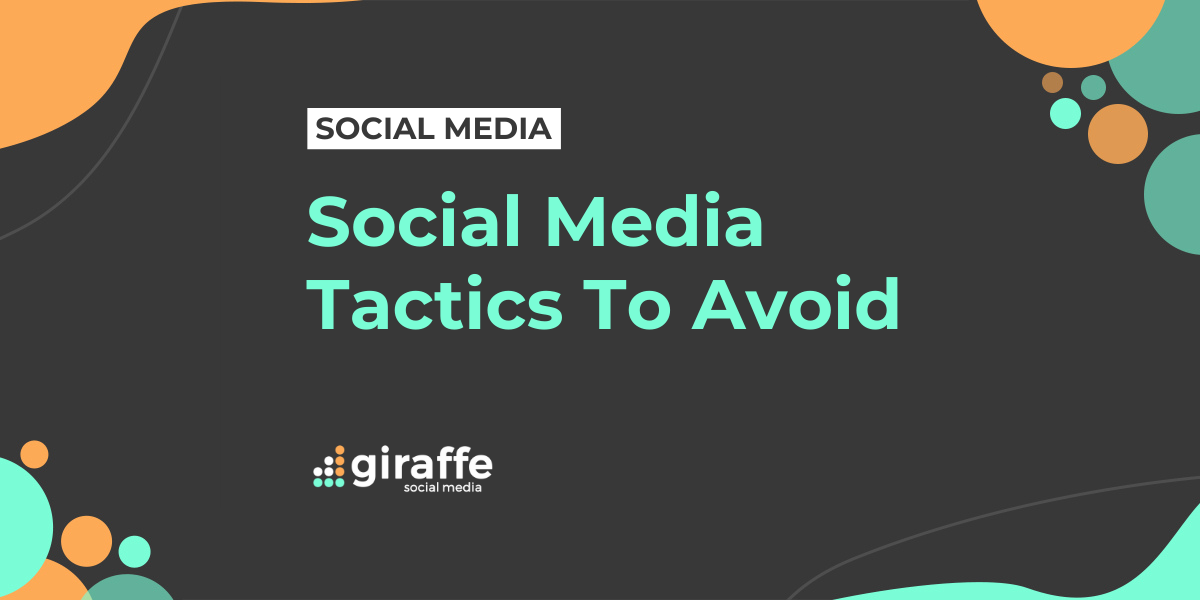There are good social media tactics, there are bad social media tactics, and then there are social media tactics that you should completely avoid.
Now and again, big global brands will launch a campaign that flops or release a tweet with disastrous messaging. It’s unfortunate, but it happens. However, some businesses take it to the next level with social media tactics that are simply dire all of the time.
In the crosshairs today are social media tactics that are so outdated, annoying, and/or pointless that they ruin the average user’s experience. What follows is a list of social media tactics that you should avoid at all costs:
1. Non-personalised mass automated DMs
Internet users can usually tell when a message is automated, especially when there is no personalisation or relevance to their lives. If you’re going to send cold DMs – such as through Recruiter InMail on LinkedIn – you need to be aware that most users will ignore the message if it’s not relevant to them. Ensure that you’re only sending these mass DMs to users who are very likely to respond or be interested in the topic, job opportunity, or sales pitch at hand.
Avoid “thank you for following” private messages altogether. They don’t add any value and may turn off the user you’re messaging completely, possibly even make them unfollow. If you want a user to engage with you, reach out with something of value to them, preferably publicly. Interact with a new follower or influencer with a public message – which could be a tweet or a comment on their Facebook/Instagram – with a question, anecdote, or relevant fact to interest them and elicit a response.
Direct messaging should be reserved for customer service and private matters, which can then be shifted to email or a phone call; it should be a stepping stone to other forms of communication.
2. Facebook groups for events
Nothing is more harrowing than being added to a club-night guest list group by a random promoter acquaintance you haven’t seen since Freshers Week at university eight years ago. But it happens.
While Facebook groups can be great for marketers/businesses to build a community and have a direct line of communication to their audience, they’re best used to build long-term relationships and a community. Creating a new group for every event will get spammy very quickly. Creating and promoting an event through your business page is the correct way to do it; your friends want to be invited – not bombarded.
3. Using comment bots
No matter how hard you try to make automated Instagram comments sound authentic, they just don’t sound real – because they aren’t. Your business should have a dedicated social media team that performs genuine and effective community management, including manually commenting and engaging with other posts by brands and influencers.
What’s more, comment bots aren’t fair on everybody else, as hashtags that are practically owned by bots fluff up engagement rates by polluting them with empty numbers.
Even worse, with comment bots, it’s hard to keep track of what has been commented on your behalf and where unless it is directly responded to. This makes engagements difficult to track and puts your consistent brand messaging at risk.
Some bot services can seem intuitive enough, making use of hashtags to target content that you might want to engage with. But at the rate that automated comment services work, sooner or later one of those seemingly innocent comment combinations is going to pair up with an irrelevant photo – say for instance the comment “Love this, so gorgeous!” was generated under a photo of a dentistry operation… Inappropriate and irrelevant.
4. Pointless tagging
Tagging can undoubtedly come in useful for expanding reach and engaging in social media discourse. But like anything else on social media, it should only be utilised when it offers value to users. Tagging a user in a conversation that is of little or no importance to them is a redundant endeavour and can harm your brand’s image. It is effectively wasting their and your time and could ruin any future relationship with the user/brand. Tagging multiple random accounts is even worse.
The key to tagging/mentions is to do it when there is an appropriate purpose for it, it adds value to the conversation, and you know the user or brand well. For example, tagging an influencer in your industry – that you have a consistent working relationship with – in an industry-specific post that is about or relates to their content.
As with all community management, have a clear message and purpose in mind when writing a comment that tags another user. The goal is to have them respond and engage in a conversation, and they can’t respond meaningfully to “check this out!”
5. Ignoring current, socio-political events
When this article was last edited in 2019, we used the number 5 spot to discourage brands from getting involved in politics on their social media accounts. Now, we believe the opposite advice should be given. The socio-political landscape has changed so drastically in recent years that now if brands avoid discussing politics or social justice online, they can offend their audience and harm their brand.
Your business (and the individuals representing your company on their personal accounts) should carefully plan out any social media posts related to social issues, political opinions, and current events. Radical political views or controversial social stances being broadcasted on social media and associated with your brand can be harmful to your brand, impact employee morale, and contribute to the wrong brand tone and messaging.
However, being open and transparent about the charities you support, causes you rally for, and volunteering your employees carry out are all wonderful ways to show the genuine values and morals of your company without spamming political content.
Social media strategy is a lot more complicated than people think. If your company has breached any of these social media tactics to avoid, keep up with Giraffe on Twitter, Instagram, TikTok, and Facebook for all the latest tips and tricks for planning your social media strategy. Haven’t got the time? We get it; get in touch with us today to find out how we can turn your brand’s social media channels from failing to flying.
Editor’s note: This article was last edited in 2019 and has been updated for accuracy and relevance in July 2021.






